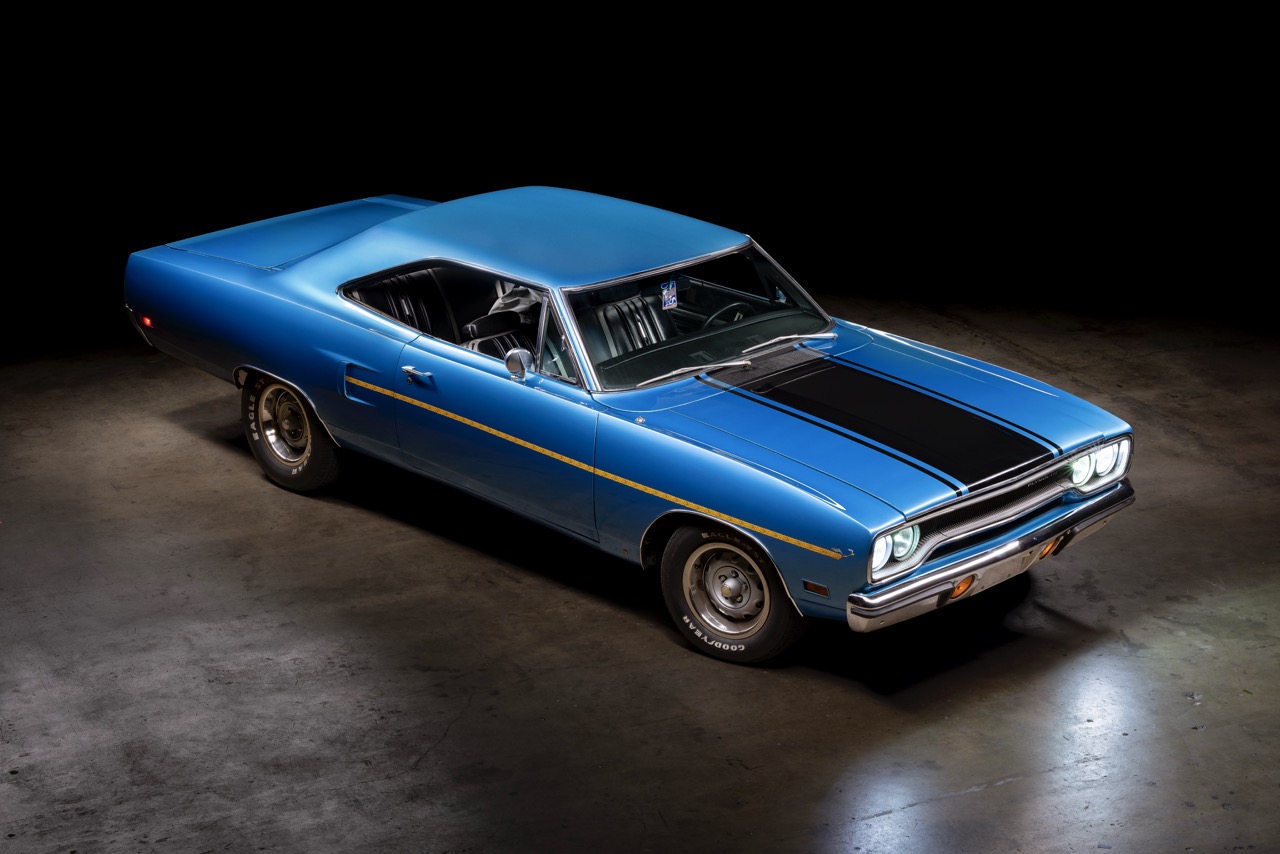The Most Badass 80s Performance Cars
Part 3 from The Story of the 1980s Quickest Muscle Cars:
- Part 1 – Pontiac Trans Am – Redesigning the Modern Muscle Car
- Part 2 – Buick Grand National – Finding a Replacement for Displacement
- Part 3 – The Most Badass 80s Performance Cars
Unfortunately, at the height of its success, the Grand National was canceled. GM announced it was moving away from the G-platform. The Buick Regal was to become a front-wheel-drive car, using the new W-platform.
Buick decided to make one final, ultimate V8 killer, so in 1987 they offered the special edition GNX – the Grand National Experimental.
1987 Buick GNX – Going out with a bang

Buick sent 547 vehicles to ASC / McLaren Performance Technologies to be upgraded to GNX models.
ASC replaced the turbocharger with a Garrett AiResearch T-3 unit including a ceramic impeller. A new large-capacity intercooler was installed and special ceramic-coated tubing led the charged air straight to the engine.
The transmission was reprogrammed and equipped with a custom torque converter. A new Panhard bar was mounted to a custom differential cover. The GNX also got new 16-inch black mesh wheels with ZR-rated tires.
Buick rated the car at 276 horsepower and 360 lb-ft of torque. The GNX made at least 300 hp, which became obvious after running some speed tests.
The car scored a 0 to 60 time of 4.7 seconds and a 1/4-mile time of 13.5 seconds.
The same year Chevrolet Corvette had a small-block 5.7-liter TPI V8 with 240 horsepower and 345 lb-ft of torque. The Corvette was lighter and vastly more aerodynamic than the GNX. Yet, it launched to 60 mph in 5.8 seconds and ran a ¼ mile in 14.5 seconds.
The 1987 Buick GNX was 1 second faster than the Corvette. General Motors’ most prized and protected sports car was beaten by a heavy, brick-shaped, V6-powered car made by its own child company.
The 1987 Ford Mustang GT, with its 5.0-liter EFI HO V8 engine, was even slower, achieving a 0 – 60 mph time of 6.3 seconds and a ¼ mile in 14.9 seconds.
GNX was the quickest car in America and one of the quickest in the world, topping many Ferraris and Porsches – at least in a straight line.

It will forever be considered one of the cornerstones of the American auto industry in the 1980s. And the turbocharged 3.8-liter SFI V6 is undeniably the best American performance engine of its decade.
Prices for the GNX started at $29,900. It was not cheap, considering the base Grand National cost $16,154.
But today, its average price is $120,000 with auctions frequently reaching $150,000 – $200,000. The most expensive one so far was sold for $220,000 in 2017.
20th Anniversary Turbo Trans Am – The quickest 80s performance car
Of course, Buick’s accomplishments didn’t change the company’s fate. The 1988 Buick Regal was launched as a front-wheel-drive car and nobody expected to see the turbo V6 again.
Well, it was Pontiac who gave it a second chance in life. Pontiac wanted to create a special car for Trans Am’s 20th anniversary, so they decided to use Buick’s V6.
Maybe it’s because Pontiac also had a turbocharged engine before its engine development program was canceled. Maybe, it’s because Buick wanted their legacy to continue. Probably a bit of both.
But there it was – America’s most aerodynamic body was being married to its top-performing engine.
Pontiac partnered with a company called Prototype Automotive Services to perform the development of the engine and convert the 1,555 1989 Trans Am GTA units into the 20th Anniversary Turbo Trans Am.
They are all white with a camel interior. The 20th Anniversary Pace Car was optional (but free).

The 3.8-liter SFI V6 didn’t fit the small engine bay of the Trans Am. So cylinder heads from the newer 3800 V6 were used. These heads were a lot more advanced with refined intake and exhaust ports for better flow. It used new valves and a new combustion chamber design and pistons to match.
PAS added a bigger oil cooler, cross-drilled the crankshaft and reverted to an all-metal water-cooled turbo for increased durability and reliability. More upgrades follow – custom stainless steel headers and revised intake.
An electronically-controlled wastegate allowed precise control over boost levels – going up to 16.5 PSI. A knock sensor signaled the computer to retard ignition timing and reduce boost pressure. The engine also received a new Bosch-powered fuel system. Air-fuel ratios could be finely adjusted on-demand, further improving efficiency and power, as well as reducing knock and exhaust gas temperatures.
By all means, the new turbo V6 was more advanced than the one used in the GNX.

However, Pontiac listed the 1989 Turbo Trans Am with just 245 hp. This, of course, wasn’t true. However, rumors go GM wouldn’t allow another blow to the Corvette’s reputation, especially as it was nearing completion of the first-ever ZR1 model.
Regardless, the 20th Anniversary Trans Am offered an undeniable performance:
Car and Driver recorded a 0 – 60 mph time of 4.6 seconds and a quarter-mile run in 13.4 seconds at 101 mph.
Equipped with the 200-4R four-speed automatic – the only transmission available – the Turbo Trans Am achieved 162 mph top speed. Later, PAS tested the car up to 181 mph with a ZF 6-speed manual transmission.
The 1989 C4 Corvette accelerated from 0 to 60 mph in 5.8 seconds and completed a quarter-mile in 14.2 seconds. It also had a top speed of 152mph.
The Corvette had to wait a full year, until the ZR1 came out with 375 horsepower, in order to match this acceleration.
Moral of the story
This is where our story ends. Apart from some deserved cult following, the 1987 GNX and 1989 Turbo Trans Am faded from fame.
In 1990, Chevrolet Corvette ZR1 took the spotlight and became “King of the Hill”.
But as far as the 80s go, the 3.8-liter SFI turbo V6 was the undisputed ruler.
The Turbo Trans Am offered a Ferrari-like acceleration while securing an almost economical gas mileage – 16 mpg city, 24 mpg highway.
After 20 years on the market, the 1989 Firebird didn’t get any more horsepower, but it was the fastest car around at the same time consuming half the fuel it used to.
The technologies pioneered by Buick and Pontiac pushed the industry forward and became cornerstones for the next generation of automobiles.
Recent Posts
-

Reegan Is Building This 1975 Dodge Ramcharger For One Lucky YouTube Subscriber
August 13, 2025Update 08/15/25: Reegan now has an all new aluminum radiator installed with dual electric fans. The Wilwood master cylinder is installed along with an EvansCNC…Read more -

Let's Turn a 1970 Plymouth Roadrunner into RestoMods Royalty
August 8, 2025Update: 8/8/2025 A little over a year ago we purchased a beautiful 1970 Plymouth Roadrunner from a local collector car dealership Bayside Auto. We knew…Read more -

The Ultimate 1968 Dodge Charger HELLCAT Build
August 8, 2025Update 8/8/25: Back in January of 2024, we purchased a 1968 Charger shell from Mopars 5150. They specialize in all things Mopar and had a…Read more
Become a Car Club Member
Car Club Members Get Entries to Win, Discounts in our Shop, Discounts with our Preferred Partners and more!
Membership benefits
By joining the RestoMods Car Club Today, you will receive amazing perks plus 15 bonus entries into our sweepstakes for every month you are an active member
-
Auto Discounts:Curated Discounts From Your Favorite Parts Companies
-
Restomods Monthly:Monthly Magazine With The Latest Industry News
-
Classified Ads:Get Free Postings seen by 300,000 enthusiasts monthly
-
Car Show Tickets:Check out the biggest vintage car shows on us.
-
Exclusive Car Deals:First chance to purchase any prize cars not selected






Restomods on Instagram
Follow us on Instagram and other networks













